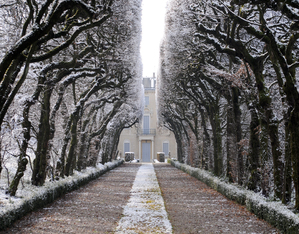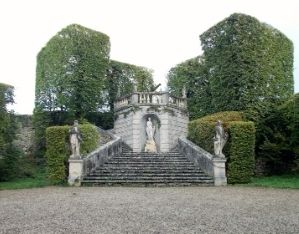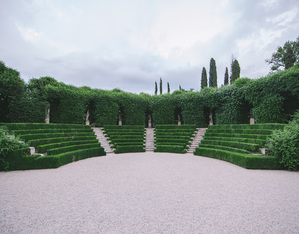Famous above all for its open-air theatre, this extraordinary garden was designed in the late 18th century by Veronese architect Luigi Trezza, making it one of the last Italian-style gardens to be established in the Veneto region.
The Counts Rizzardi had a residence at Pojega in 1677. The villa we see today was built between 1868 and 1870 to replace the previous building. The complex is best known for its extraordinary garden. Designed by Luigi Trezza between 1783 and 1796, it is formally-inspired, rich in scenic effects, sudden views opening up, and enchanting outlooks over the wondrous landscape of terraced vineyards. Close to the building, this Italian-style garden is divided into three parterres, organized as symmetrical flowerbeds bordered by hedges. The first, trapezoidal sector, known as the “secret garden”, is connected to the villa via a small bridge, enclosed at its far apex by an imposing, rustic nymphaeum that has a statue of a river deity at its centre. The second sector, arranged around an oval basin and bounded by lemon houses, offers access to the parterrebelow, where two circular fountains gurgle. A pruned, shady hornbeam gallery begins here. A second avenue, this time of cypress trees, leads to the open-air theatre, an admirable example of plant architecture, combined with a remarkable belvedere overlooking the vine-planted plains. Another cypress-lined avenue stretches out from the topmost part of the theatre, leading to a small, peculiar building that has a hexagonal terrace, enclosed by a hornbeam hedge that directs visitors’ gaze towards the landscape below. An integral part of any visit to the park, a wood extends across the slope, traversed by a path dotted with statues of gods and animals, leading to a shelter in the woods for elected spirits: a circular pavilion decorated with rock concretions, pebbles, and statue-filled niches.




